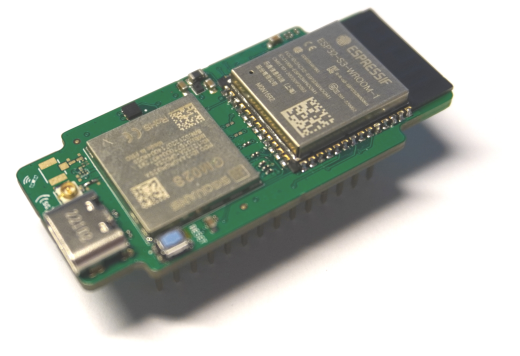GPS and 5G connection are supported using the open-source ESP32 module.
The Walter is a future embedded device containing a GM02SP module for NB-IoT, LTE-M, GPS protocols, and an ESP32-S3 microprocessor. The board will also have CE and FCC certifications to hasten the creation of products for consumers.
The ESP32-S3 was spotted in various devices last year, including the Banana Pi BPI-PicoW-S3, the Bee Motion S3, the T-SIMCAM, etc.)
32-bit Xtensa LX7 dual core (up to 240MHz); 2MB PSRAM (Quad SPI); 16MB Flash memory; ESP32-S3 (Quad SPI)
Up to 24 GPIOs are available on the Walter board, and it also has to debug test pins on the other side of the board, as illustrated below:
The datasheet states that AT instructions are used to communicate across the UART0 interface between the Sequans GM02SP module and the ESP32-S3 chip. In case users need to remove connected devices such as sensors or other external devices, it appears that the Walter board also incorporates a software-controllable MOSFET transistor to switch its peripheral power pin.
The developer firm provides a draught datasheet for documentation which is accessible here or on the product website. The business is still testing its libraries, which will handle NB-IoT, LTE-M, and GPS, according to a company spokeswoman.
Before their crowdsourcing effort begins, the pertinent libraries and extra documentation will be posted to a GitHub repository. Furthermore, it is stated on the sale page that "the schematics will be given under the GPLv3 license."
- CPU: Xtensa Dual-core 32-bit LX7 CPU (ESP32-S3 SoC)
- RAM: 2MB (Quad SPI) PSRAM
- Flash: 16MB (Quad SPI) Flash memory
- WiFi: 150Mbps(n) 802.11 WiFi b/g/n with on-board antenna
- LTE: CAT M1/NB1/NB2 (GM02SP module)
- GPS: GPS, GNSS Constellation support (GM02SP module)
- Bluetooth: 2Mbps Bluetooth 5 (LE), Bluetooth Mesh
- 24 physical GPIO pins
















0 Comments